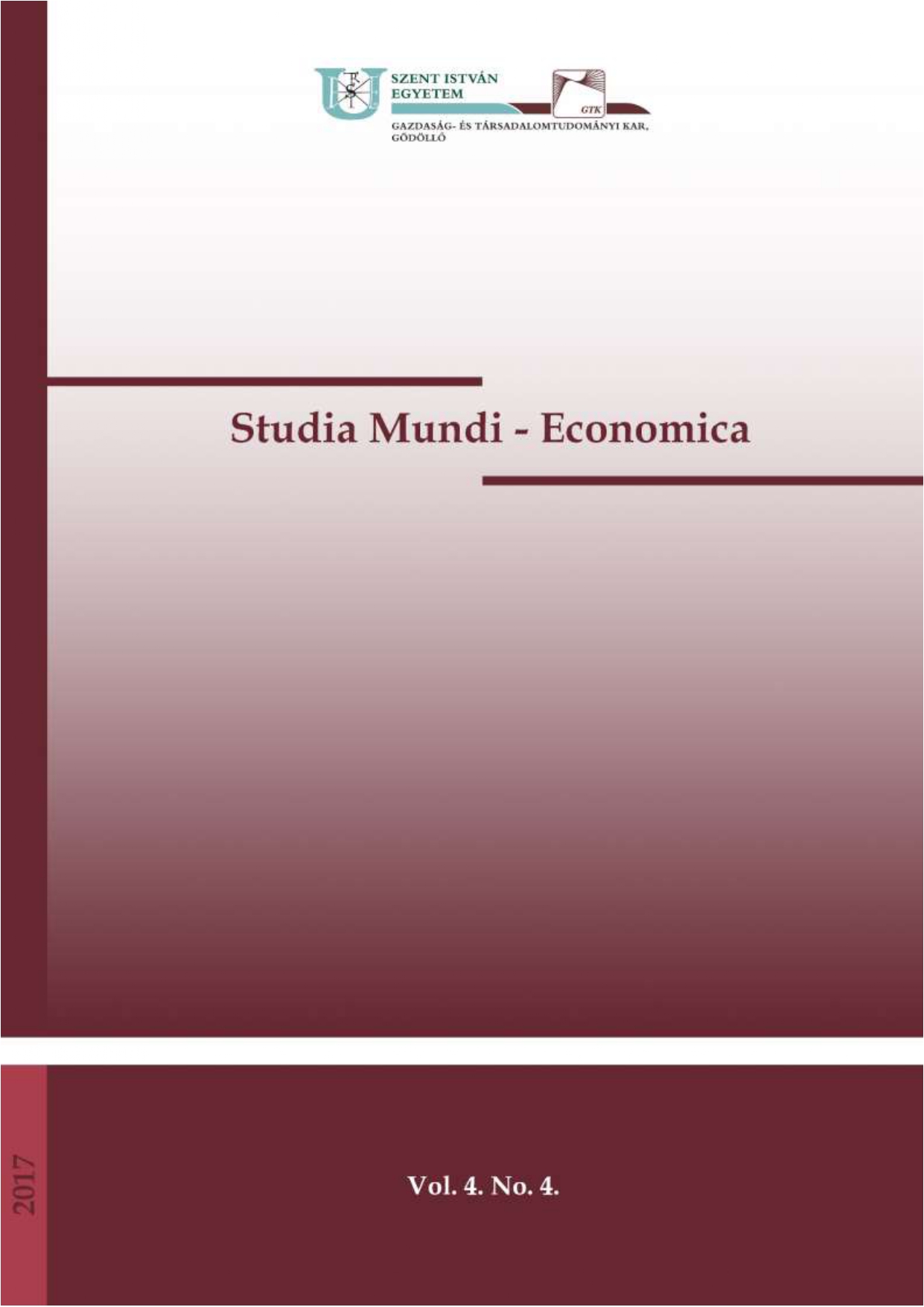Analysis of the applicability of SMART initiatives in Hungary
DOI:
https://doi.org/10.18531/Studia.Mundi.2017.04.04.29-37Keywords:
SMART City kezdeményezések, SMART Village, élhetőbb város, IKTAbstract
Annually the domestic and international literature published a series of SMART themes illustrate the fact that today's spatial and rural development is increasingly focusing on examining the conditions and impacts of innovation. Over the past two decades, the European Union has re-evaluated its innovation policy, with new tools and methods emerging in relation to the SMART factors. In terms of the Earth as a whole, the proportion of urban inhabitants exceeds half of the current population of the Earth, which proportion is likely to rise (based on preliminary estimates) in the future. The spatial processes of the European Union and Hungary both show that the role of urban (urban) areas is appreciated, as urban areas provide the engine of economic growth (Káposzta et al., 2016). The SMART City concept of the European Union aims at improving the quality of life and the social, economic and environmental infrastructure in this area, complemented by the quantity and quality of services available. The primary task of the European Union SMART Village concept is to increase the country's population retention power. The purpose of this paper is to provide an overview of the current state of the SMART initiatives in Hungary.
References
Batty M. et al. (2012): "Smart Cities of the Future". European Journal of Physics ST. 214: 481–518. DOI: https://doi.org/10.1140/epjst/e2012-01703-3
Dobos K. – Kulcsár S. – Nagy P. – Sik A. – Szemerey S. – Megyhárt É. (2015): SMART City Tudásplatform Metodikai javaslat, Lechner Tudásközpont, Budapest, 2015. http://lechnerkozpont.hu/doc/okos-varos/smart-city-tudasplatform-metodikai-javaslat.pdf
Kassai Zs. – Molnár M. (2016): The social success factors of local rural development In: Ritter K (szerk.) Economic and local aspects of rural development. 117 p. Gödöllő: Szent István Egyetemi Kiadó, 2016. pp. 108-117. ISBN:978-963-269-550-1
Káposzta J.- Ritter K. – Nagy H. (2016): Local Economic Development in Transition Economies: A Tool for Sustainable Development of Rural Areas In: Vasily Erokhin (szerk.) Global Perspectives on Trade Integration and Economies in Transition. 361 p. Hershey: IGI Global, 2016. pp. 281-298. ISBN:9781522504528
Lados M. (2011): Smart Cities tanulmány. [e-book] Győr: MTA RKK Nyugat- magyarországi Tudományos Intézet. http://www- 05.ibm.com/hu/download/IBM_SmarterCity_20110721.pdf, 2013 01 09
McLaren – Duncan – Agyeman - Julian (2015): Sharing Cities: A Case for Truly Smart and Sustainable Cities. MIT Press. ISBN 9780262029728
Nagy A. – Sain M. – Sárdi A. – Vaszócsik V. (2015): Településértékelés és monitoring, módszertani javaslat, Lechner Tudásközpont, Budapest, 2015. http://lechnerkozpont.hu/doc/okos-varos/telepulesertekeles-es-monitornig-modszertani-javaslat.pdf
Oláh I.- Ritter K,.-Tóth T. (2013): The role of local communities in the disadvantaged rural areas In: Szendrő Katalin, Soós Mihály (szerk.) Proceedings of the 4th International Conference of Economic Sciences. 595 p. Konferencia helye, ideje: Kaposvár, Magyarország, 2013.05.09-2013.05.10. Kaposvár: Kaposvár University, 2013. pp. 547-553. (ISBN:978-963-9821-62-0)
Rab J. – Riedel M. – Steiner B. (2015): SMART City Példatár, Lechner Tudásközpont, Budapest, 2015. http://lechnerkozpont.hu/doc/okos-varos/smart-city-peldatar.pdf
Tóth T. - Káposzta J. (szerk.) (2014): Tervezési módszerek és eljárások a vidékfejlesztésben (elmélet) Gödöllő: Szent István Egyetemi Kiadó, 2014. 163 p. (ISBN:978-963-269-407-8)
Virág Á. (2017): A turisztikai együttműködések hatékonysága a vidéki térségekben In: Ritter Krisztián (szerk.) Vidékgazdasági tanulmányok. 120 p. Gödöllő: Szent István Egyetemi Kiadó, 2017. pp. 43-54.
Vas Zs. – Bajmócy Z. (2012): Az innovációs rendszerek 25 éve. Szakirodalmi áttekintés az evolúciós közgazdaságtani megközelítésben. Közgazdasági Szemle, 59, 11, pp. 1233- 1256.
Biocon Tanácsadó Bt., IKT a városfejlesztésben ppt, 2016.
www.hvg.hu
http://kozigazgatas.netenahivatal.gov.hu
http://magyarepitestechnika.hu
http://okosvaros.lechnerkozpont.hu/hu
www.terport.hu
Downloads
Published
Issue
Section
License
Copyright (c) 2017 Némediné Kollár Kitti, Káposzta József, Péli László

This work is licensed under a Creative Commons Attribution-NonCommercial-NoDerivatives 4.0 International License.
A folyóirat Open Access (Gold). Cikkeire a Creative Commons 4.0 standard licenc alábbi típusa vonatkozik: CC-BY-NC-ND-4.0. Ennek értelmében a mű szabadon másolható, terjeszthető, bemutatható és előadható, azonban nem használható fel kereskedelmi célokra (NC), továbbá nem módosítható és nem készíthető belőle átdolgozás, származékos mű (ND). A licenc alapján a szerző vagy a jogosult által meghatározott módon fel kell tüntetni a szerző nevét és a szerzői mű címét (BY).






